
Unreal Tournament is a first-person arena shooter video game developed by Epic Games and Digital Extremes. The second installment in the Unreal series, it was first published by GT Interactive in 1999 for Windows, and later released on the PlayStation 2 and Dreamcast by Infogrames in 2000 and 2001, respectively. Players compete in a series of matches of various types, with the general aim of out-killing opponents. The PC and Dreamcast versions support multiplayer online or over a local area network. Free expansion packs were released, some of which were bundled with a 2000 re-release: Unreal Tournament: Game of the Year Edition.

Warcraft III: The Frozen Throne is the expansion pack for Warcraft III: Reign of Chaos, a real-time strategy video game by Blizzard Entertainment. It was released worldwide on July 1, 2003, for Microsoft Windows and Mac OS X. The Frozen Throne builds upon the story of Reign of Chaos and depicts the events after the main game's conclusion. The single-player unfolds from the perspective of two new protagonists—the Night Elf warden Maiev Shadowsong and the Blood Elf prince Kael'Thas—as well as returning protagonist Arthas Menethil. Additionally, the expansion contains Act I of a separate Horde campaign that is independent from the main storyline with Blizzard releasing Acts II and III via patch in December 2003, taking in player feedback of Act I when developing these chapters.

Unreal II: The Awakening is a first-person shooter video game developed by Legend Entertainment and published by Infogrames under the Atari brand for Microsoft Windows, the game was later ported to Microsoft's Xbox console by Tantalus. It is the sequel to the 1998 video game Unreal and part of the franchise of the same name. Cliff Bleszinski was an executive producer for the title.

Counter-Strike: Condition Zero is a first-person shooter video game developed by Ritual Entertainment, Turtle Rock Studios, and Valve, and published by Sierra Entertainment and Valve. The follow-up to Counter-Strike (2000), it was released in March 2004 for Windows. Condition Zero utilizes the GoldSrc engine and has a multiplayer mode, which features updated character models, textures, maps and other graphical tweaks. It also includes two single-player campaigns; Tour of Duty and Condition Zero: Deleted Scenes.

Empires: Dawn of the Modern World is a 2003 real-time strategy video game developed by Stainless Steel Studios and published by Activision. Set in a world-historical period that extends from the Middle Ages to World War II, the game tasks players with guiding one of nine rival great civilizations to victory. Customer surveys from Stainless Steel's previous game, Empire Earth, were used as a starting point for Empires: these inspired the team to take a more minimalist design approach, and to include civilizations without overlapping styles of play. Empires was positively received by critics, who enjoyed its multiplayer component. However, certain reviewers disliked its single-player mode, and opinion clashed on the game's level of uniqueness compared to competitors such as Rise of Nations. The sales of Empires, when combined with those of Empire Earth, totaled 2.5 million units by 2004.
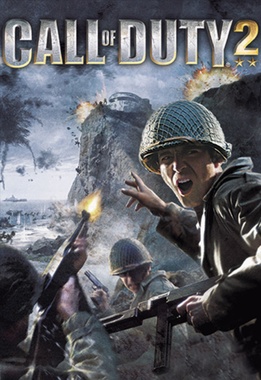
Call of Duty 2 is a 2005 first-person shooter video game developed by Infinity Ward and published by Activision in most regions of the world. It is the second installment of the Call of Duty series. Announced by Activision on April 7, 2005, the game was released for Microsoft Windows on October 25, 2005, and as a launch title for the Xbox 360 on November 22, 2005. Other versions were eventually released for OS X, mobile phones, and Pocket PCs.
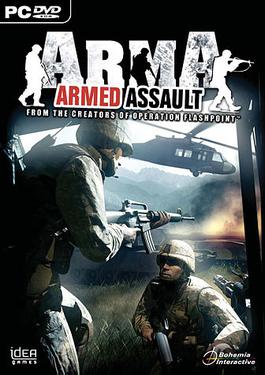
Arma: Armed Assault is a 2006 tactical shooter simulation video game developed by Bohemia Interactive and published by 505 Games in Europe and Atari in North America for Microsoft Windows. It is the first installment in the Arma series and is a spiritual successor to the 2001 video game Operation Flashpoint: Cold War Crisis, which was also developed by Bohemia. Set on the fictional Atlantic island of Sahrani, the game follows United States Armed Forces military advisors as they are caught in the midst of a conflict between the two rivalling nations on the island.
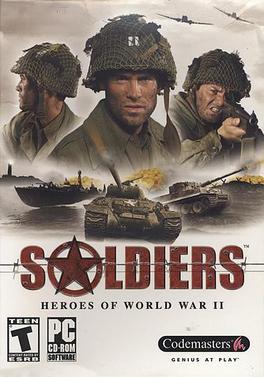
Soldiers: Heroes of World War II is the first in a series of real-time tactics video games set in World War II, developed by or under the supervision of Ukrainian company Best Way.
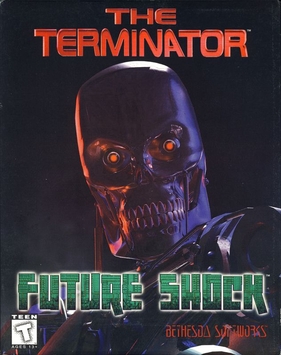
The Terminator: Future Shock is a first-person shooter video game based on The Terminator fictional universes developed and published by Bethesda Softworks in 1995. A sequel, Skynet, was released in 1996.
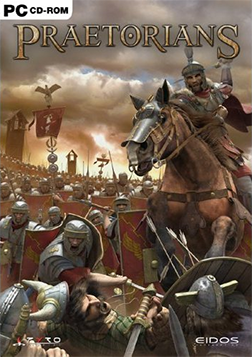
Praetorians is a 3D real-time tactics video game developed by Pyro Studios and published by Eidos Interactive in 2003, based on Julius Caesar's historical campaigns in Gaul and Britain, Crassus' battles in Parthia, and the events of Caesar's Civil War during the 1st century BC. The player controls either the Roman Republic, the Ptolemaic Kingdom, or a generic barbarian tribe based on the Helvetii, Gauls, and Celts.
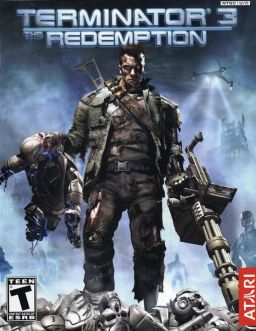
Terminator 3: The Redemption is an action-adventure video game based on the 2003 film Terminator 3: Rise of the Machines. It was developed by Paradigm Entertainment and published by Atari in 2004 for the PlayStation 2, Xbox, and GameCube. Terminator 3: The Redemption received "mixed or average" reviews according to Metacritic. It was praised for its graphics and was considered an improvement over an earlier game ; however, the gameplay was criticized as linear, repetitive and difficult.
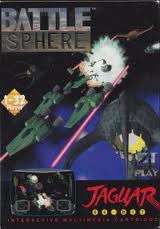
BattleSphere is a space combat simulation video game developed by 4Play for the Atari Jaguar. The game was released in 2000, with the enhanced edition BattleSphere Gold released in 2002. Set during a future war between seven alien races, the factions agree to confine their hostilities to a tournament with the galaxy at stake. Gameplay consists of five modes, each featuring distinct scenarios and objectives. Up to 16 players can participate in a deathmatch mode via local area network (LAN) play.

Skynet is a computer game based on the Terminator media franchise. It was intended as an expansion pack for the predecessor The Terminator: Future Shock, but was adapted into a standalone product.

The Terminator: Dawn of Fate is a 2002 video game developed by Paradigm Entertainment and published by Infogrames for the PlayStation 2 and Xbox. It is based on the Terminator film series, serving as a prequel to the first two films.

Terminator 3: Rise of the Machines is a first-person shooter video game based on the film of the same title, with elements of hand-to-hand combat in the third-person perspective. It was developed by Black Ops Entertainment, with assistance work done by other Atari-owned subsidiaries. The game was published by Atari for PlayStation 2 and Xbox in 2003. An isometric shooter version was released for the Game Boy Advance during the same year. A puzzle game was also released for mobile phones. The game was also going to be released for GameCube, but was eventually cancelled.

T-MEK is a two-player, sit-down, virtual reality fighting arcade game developed and published by Atari Games in 1994.

Baldies is a 1995 real-time strategy video game developed by Creative Edge Software and originally published by Atari Corporation for the Atari Jaguar CD. It was later ported to the PC, PlayStation, Sega Saturn, and Macintosh. In the game, the player manages a community of Baldies in order to build structures, increase their population, and create weapons to fight against enemies known as Hairies. There are four classes of Baldies and each structure has specific properties to assist the player. Its gameplay combines strategy with simulation and god game elements. Up to four players can participate in a multiplayer mode via local area network (LAN) on PC.

Star Wars: Battlefront is a 2004 first and third-person shooter video game based on the Star Wars film franchise. Developed by Pandemic Studios and published by LucasArts, it is the first installment in the Star Wars: Battlefront series. It was released on September 21, 2004, for PlayStation 2, Xbox and Microsoft Windows to coincide the release of the Star Wars Trilogy DVD set. Aspyr released a Mac OS X port in July 2005, and a cellular phone version, Star Wars Battlefront Mobile, was released on November 1, 2005.

A first-person shooter (FPS) is a video game centered on gun fighting and other weapon-based combat seen from a first-person perspective, with the player experiencing the action directly through the eyes of the main character. This genre shares multiple common traits with other shooter games, and in turn falls under the action games category. Since the genre's inception, advanced 3D and pseudo-3D graphics have proven fundamental to allow a reasonable level of immersion in the game world, and this type of game helped pushing technology progressively further, challenging hardware developers worldwide to introduce numerous innovations in the field of graphics processing units. Multiplayer gaming has been an integral part of the experience, and became even more prominent with the diffusion of internet connectivity in recent years.



















